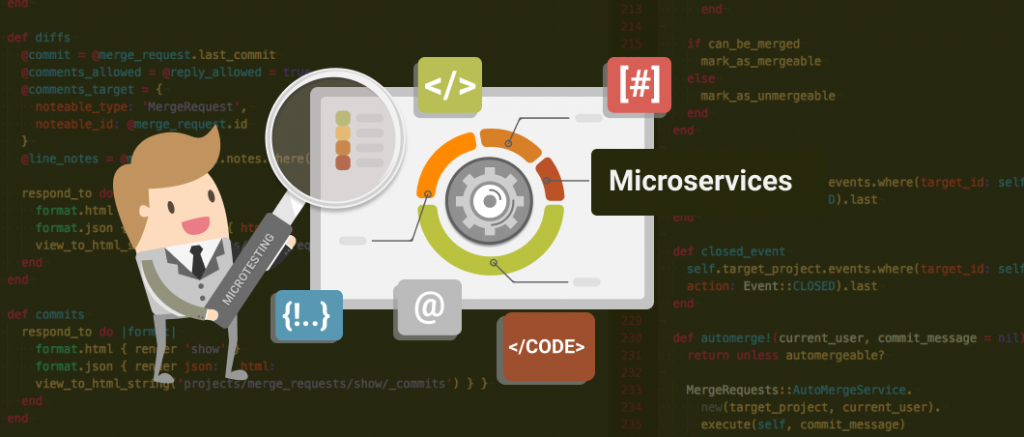Last updated on December 7th, 2022
You’re probably hearing a lot about microservices. Being a collection of small, extremely focused services that constitute an entire application or task, each instance of a microservice represents a single responsibility within the application. This is unlike traditional applications that are tightly coupled, and where the instances are highly dependent on each other. There, any change requires developers to completely re-build and re-deploy the whole application.
Turning to software testing, since microservices components are independent of each other, it makes testing and deploying them a piece of cake. However, the growing interest in and adoption of microservices also brings forth many challenges, specifically with respect to testing. So, what makes testing microservices so challenging, and what role does test automation play? Let’s find out!
The challenge of testing microservices
- The more the number of microservices, the more complex the software is to test – especially if the code is being moved from a monolithic architecture to a microservices-based architecture. Here, a massive number of tiny services are bound to be generated.
- When there are so many independent services, prioritizing resource allocation becomes tough. Testers cannot risk allocating many resources to a team that is responsible for a relatively small functionality.
- Effective testing requires testers to have a thorough knowledge of each of the various services. Writing test cases for each individual service and analyzing logs across multiple microservices is harder and more time-consuming.
- Redesigning the working of an application with respect to microservices can be very challenging for a software architect – especially for large and complex enterprise systems. And, this complexity cascades into the definition of the testing strategy.
- Although microservices provides developers the freedom to be independent of a specific programming language, it doesn’t save them from the hassle of maintaining multiple libraries and database versions.
- Because of the variety of developers from different microservices teams, there are numerous ways for performing a single action – different developers might end up creating the same feature in a different language.
- The presence of numerous independently functioning teams makes collaboration difficult. Without a modern interface for communication, it can become extremely strenuous for teams to get, and stay, on the same page.
- Also, since so many independent teams work simultaneously on improving different functionalities, coordinating the overall development becomes a challenge.
- Since the individual services are independent of one another despite being a part of an interconnected structure, each component has to be tested individually and then together as a complete system.
The role of test automation
Since components in a microservices architecture are independent of one another, it makes them independently deployable and testable as well. However, designing a testing strategy for microservices demands the use of the right tools, technologies, and frameworks to test every layer. The independent micro-units must be thoroughly tested before integrating with the larger application ecosystem. Test automation is a great way to deal with some of the challenges of testing microservices:
- Unit testing is integral to a microservices-based architecture, and because the unit tests are large in volume, they render themselves well to test automation. Using test automation, developers can test module behaviors by observing their interactions between objects and their dependencies as well as observe the change in their state.
- Since microservices architecture depends heavily on the communication between service components, test automation checks APIs, interfaces, communication paths, and service components while ensuring the internal implementation of services remains independent.
- By verifying the several communication paths and the service components, developers can assess the logic, check if modules interact and communicate well with external components, receive immediate feedback, and identify breakages between external components.
- Also, since APIs can be subject to change when the service is exposed, test automation drives better contract testing. Developers can check if the agreed contract is well-preserved and that the input and output of the various modules meets the contract expectations.
- Test automation also enables efficient end-to-end testing and helps in verifying that all the units within the microservices architecture work as intended and that the whole system meets the requirements. It helps to identify the gaps between services, assess the correctness of the system, and ensure the proper functioning of the entire system.
Deliver superior products
Microservices facilitates faster, more flexible, and resilient software development through decoupled, independent services that are easier to manage and deploy. In a microservices world, testing is extremely crucial. The aim is to react quickly to changes in the production environment and to ensure high quality of software product – much before users even realize there’s an issue. Given that a microservices-based architecture creates fluid, shifting relationships, test automation ensures the interfaces, databases, third-party, as well as internal sources, work seamlessly with each another. Test Automation helps simplify the testing process, enabling testers to test each component with greater precision. This ensures a thoroughly tested and superior microservices-based product with impactful functionality.



